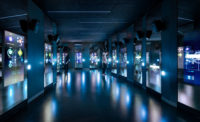Manhattan’s Lower East Side has never been a great neighborhood. At best, at the turn of the 20th century it was a tenement-ridden haven for the city’s new immigrants, and later a bargain district for shoppers from around the boroughs. For years, the only bright spots along the Bowery — the neighborhood’s notorious drag — were the much-loved but now-defunct Amato Opera and CBGB’s. Mainly, though, the area’s seedy establishments and crime-infested streets hosted locals and visitors partaking in not-so-highbrow activity.
But like so much in New York, all that has changed. While the Lower East Side’s affordable rents (by Manhattan standards) have lured artists for decades, recent years have witnessed an influx of galleries, creating a whole different kind of art scene. The completion of SANAA’s New Museum on the Bowery in 2007 was just the anchor the area needed to draw Chelsea’s heavyweights, long since driven out of SoHo’s once-mighty downtown gallery scene.
The latest arrival is Sperone Westwater. Like the New Museum just a few doors down, the 35-year-old gallery uses architecture to mark its presence with a 131-foot-tall Norman Foster—designed building that nearly matches its pioneering neighbor in size but goes one better with a bright red, moving gallery along its 25-foot-wide translucent facade.
Architecture has always had the ability, for better or worse, to transform a place. But in this case, it may also transform, for better or worse, how we view art. The Lower East Side’s narrow lots — perfect for cramming in low-cost housing and cheap storefronts — are not exactly ideal settings for museumgoers who prefer their art in large doses. In these vertical galleries, those art lovers better get used to the long wait for the elevator.





